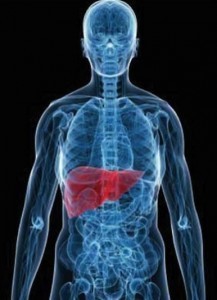 A common symptom of patients with undiagnosed celiac disease (CeD) is nutrient deficiency. When CeD patients consume gluten, it triggers the immune system to attack the microvilli of the small intestine, causing them to flatten and lose function. Microvilli are hair-like structures that assist with the absorption of vital nutrients and vitamins needed to lead a healthy life. By following a gluten-free diet, microvilli are able to regain their functioning, allowing CeD patients to efficiently absorb nutrients.1 As a result, the liver can store more fats, vitamins, and nutrients.
A common symptom of patients with undiagnosed celiac disease (CeD) is nutrient deficiency. When CeD patients consume gluten, it triggers the immune system to attack the microvilli of the small intestine, causing them to flatten and lose function. Microvilli are hair-like structures that assist with the absorption of vital nutrients and vitamins needed to lead a healthy life. By following a gluten-free diet, microvilli are able to regain their functioning, allowing CeD patients to efficiently absorb nutrients.1 As a result, the liver can store more fats, vitamins, and nutrients.
The liver is one of the most important organs of the body. Its job ranges from detoxification to chemical conversion and energy storage. The liver produces cholesterol, a fat that contributes to normal digestion, nerve, and hormone functioning.2 It is normal and healthy for the liver to store such fats, but too much fat accumulation can have harmful consequences. Non-alcoholic fatty liver disease (NAFLD) is characterized by excessive amounts of fat in liver cells. To be specific, if the amount of fat in the liver contributes to 5%-10% of the liver’s overall weight, the condition is called steatosis or fatty liver.3
CeD and NAFLD Association
A recent study has revealed that CeD patients have a higher association with NAFLD than the general public. This scientific finding was confirmed by experts at the Celiac Disease Center and Department of Pediatrics at Columbia University, as well as at the Department of Medicine and Epidemiology/Biostatistics of Stockholm, Sweden, and the Department of Pediatrics in Örebro University Hospital. The study analyzed the risk of developing NAFLD in patients originally diagnosed with CD between 1969 and 2008. The researchers found that of the 26,816 CeD patients studied, 53 were later diagnosed with NAFLD. Children had the highest risk of developing NAFLD, and the time at which NAFLD development was greatest, for both children and adults, was during the first year of CeD diagnosis. Although researchers found only a small percentage of CeD patients with NAFLD, it was statistically confirmed that CeD patients are at a greater risk for developing NAFLD than non-CeD patients.4 The frequency at which children and adults with CeD develop NAFLD demonstrates the significance of CeD screening in patients with abnormal liver functioning, especially when the cause of abnormality is unknown. Diagnosis of both CeD and NAFLD can be confirmed with a biopsy.
Moreover, according to a Member of CDF’s Medical Advisory Board, Dr. Daniel Leffer of Beth Israel Deaconess Medical Center, CeD is known to be associated with several disorders of the liver. In his recent study, 36.7% of individuals with CeD had abnormal liver function tests (LFTs), versus 19.3% of those without CeD. However, for patients who followed a gluten-free diet for an average of 1.5 years, almost 80% of those with abnormal LFTs at diagnosis had normalized.7
Pathogenesis of NAFLD in CeD patients
Currently, the pathogenesis of NAFLD in CeD patients is unclear. However, research done at the University of Chile in Santiago, Chile has analyzed the expression levels of three autoantibodies in NAFLD patients that are normally present in undiagnosed CeD patients. Of the 101 NAFLD patients studied, only nine expressed one or more of the autoantibodies.5 This study found that although few patients overall demonstrated positive celiac disease antibodies, a high prevalence of human anti-tissue transglutaminase (tTG) IgA antibodies did occur in patients with NAFLD. However, none of the patients showed symptoms of CeD, nor were proven to have CeD by endoscopy.
Overall, studies confirm the risk of future liver damage in CeD patients, as well as the presence of similar antibodies in both diseases. Unfortunately, scientists are still trying to understand whether gluten consumption prior to CeD diagnosis is the factor that leads to later liver damage, or if genetic factors are to blame. A group of researchers in Finland studied the effects of a gluten-free diet on the liver of four CeD patients. Liver damage in all four patients was reversed after following a strict gluten-free diet. They concluded that a gluten-free diet may help prevent further liver damage, but that more research is needed, as this is still poorly understood.6 These studies confirm the importance of screening for LFT abnormalities in all newly diagnosed CeD individuals.
Resources
1Shiner, M., & Birbeck, M. S. C. (1961). The microvilli of the small intestinal surface epithelium in coeliac disease and in idiopathic steatorrhoea. Gut, 2(3), 277–284.
2 Brown University. (2002). Normal Liver Physiology. Retrieved June 20, 2015, from http://biomed.brown.edu/Courses/BI108/BI108_2002_Groups/liver/webpage/NormalLiver.htm
3Weiß, J., Rau, M., & Geier, A. (2014). Non-Alcoholic Fatty Liver Disease: Epidemiology, Clinical Course, Investigation, and Treatment. Deutsches Ärzteblatt International, 111(26), 447–452. doi:10.3238/arztebl.2014.0447
4 Reilly N.R., Lebwohl B., Hultcrantz R., Green P.H.R., Ludvigsson J.F. (2015). Increased risk of non-alcoholic fatty liver disease after diagnosis of celiac disease. Journal of Hepatology, 62(6), 1405-1411.
5Valera, J., Hurtado, C., Poniachik, J., Abumohor, P., & Brahm, J. (2008). Study of celiac disease in patients with disease nonalcoholic fatty liver and autoimmune liver diseases. Gastroenterology and Hepatology, 31(1), 8-11. doi:10.1157/13114565
6Kaukinen, Katri, Leena Halme, Pekka Collin, Martti Färkkilä, Markku Mäki, Paula Vehmanen, Jukka Partanen, and Krister Höckerstedt (2002). Celiac Disease in Patients with Severe Liver Disease: Gluten-free Diet May Reverse Hepatic Failure. Gastroenterology 122(4), 881-88.
7Elevated LFTS in Celiac Disease Often Normalize With Gluten-Free Diet. Medscape. Jul 28, 2015.